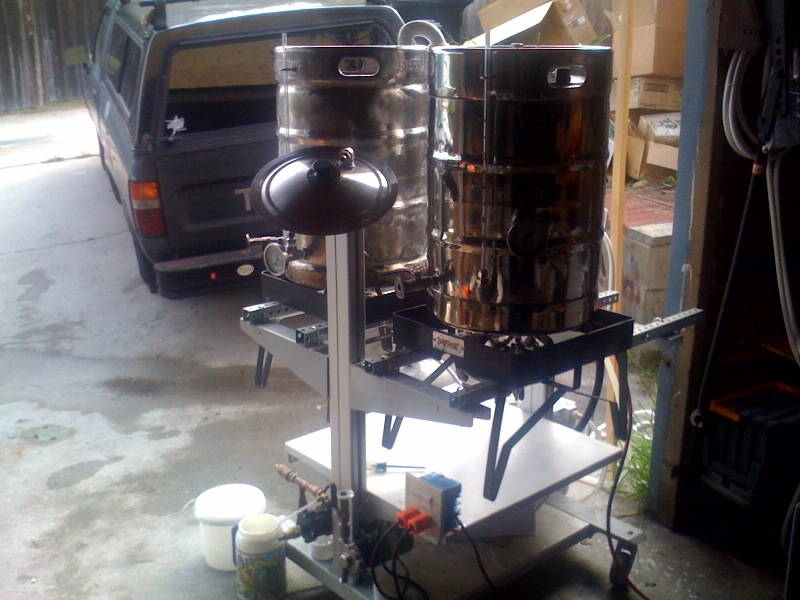I have sorted through the low efficiency threads I can find, but am a little bugged  with my mash lately.
with my mash lately.
I have a version of this:
https://www.homebrewtalk.com/f51/countertop-brutus-20-a-131411/
Only mine is 2 keggles on two burners, run manually with two pumps.
I based the idea off of Lonnie Mac's Rev 2 of the Brutus...
I am hitting mash temp, time, volumes - and controlling mash pH with 5.2.
My efficiency 2 brews this week = ~50%
Two questions:
1) Can adjusting mill gap (Barley Crusher) make up for this much inefficiency?
(-- mine is still set at factory gap)
2) I use San Diego tap water, run through a carbon filter - will adding brewing salts (which?) increase efficiency?
Two brews in a row I've had to bring up with DME, not ideal!
Any other ideas are welcome too - and I'd be glad to field any specific questions to get some idea which direction to head now...
Thanks in advance - Thomas

I have a version of this:
https://www.homebrewtalk.com/f51/countertop-brutus-20-a-131411/
Only mine is 2 keggles on two burners, run manually with two pumps.
I based the idea off of Lonnie Mac's Rev 2 of the Brutus...
I am hitting mash temp, time, volumes - and controlling mash pH with 5.2.
My efficiency 2 brews this week = ~50%
Two questions:
1) Can adjusting mill gap (Barley Crusher) make up for this much inefficiency?
(-- mine is still set at factory gap)
2) I use San Diego tap water, run through a carbon filter - will adding brewing salts (which?) increase efficiency?
Two brews in a row I've had to bring up with DME, not ideal!
Any other ideas are welcome too - and I'd be glad to field any specific questions to get some idea which direction to head now...
Thanks in advance - Thomas
























![Craft A Brew - Safale BE-256 Yeast - Fermentis - Belgian Ale Dry Yeast - For Belgian & Strong Ales - Ingredients for Home Brewing - Beer Making Supplies - [3 Pack]](https://m.media-amazon.com/images/I/51bcKEwQmWL._SL500_.jpg)

































